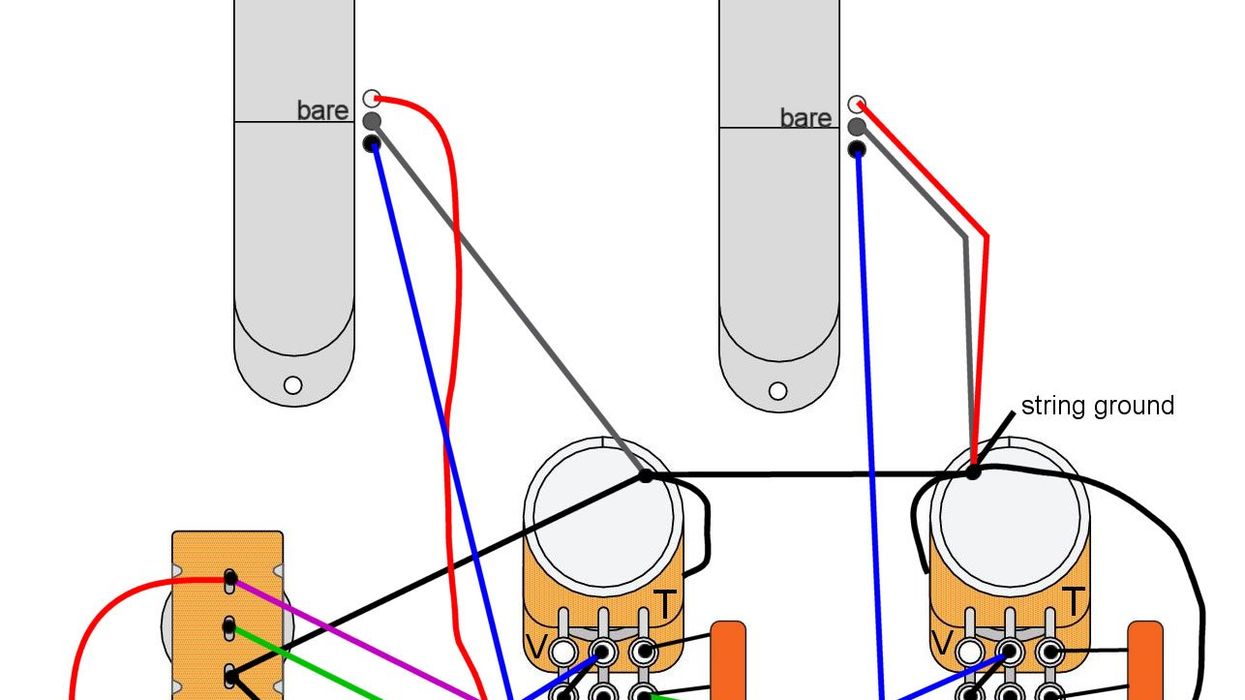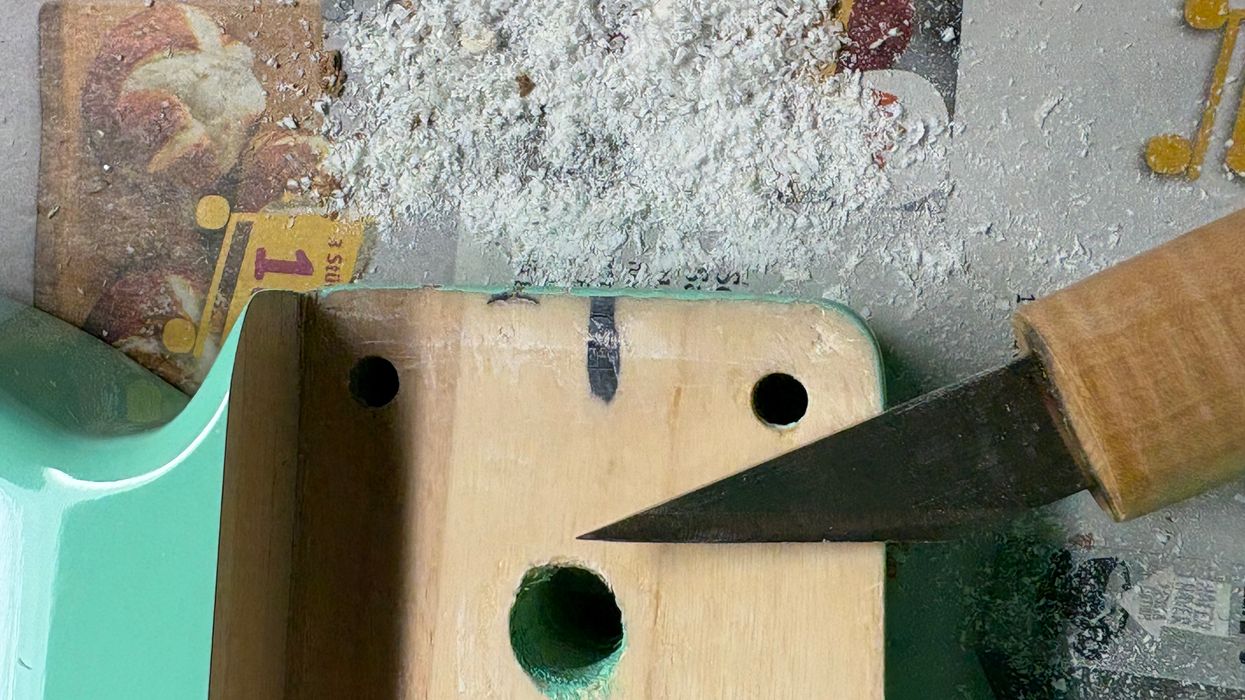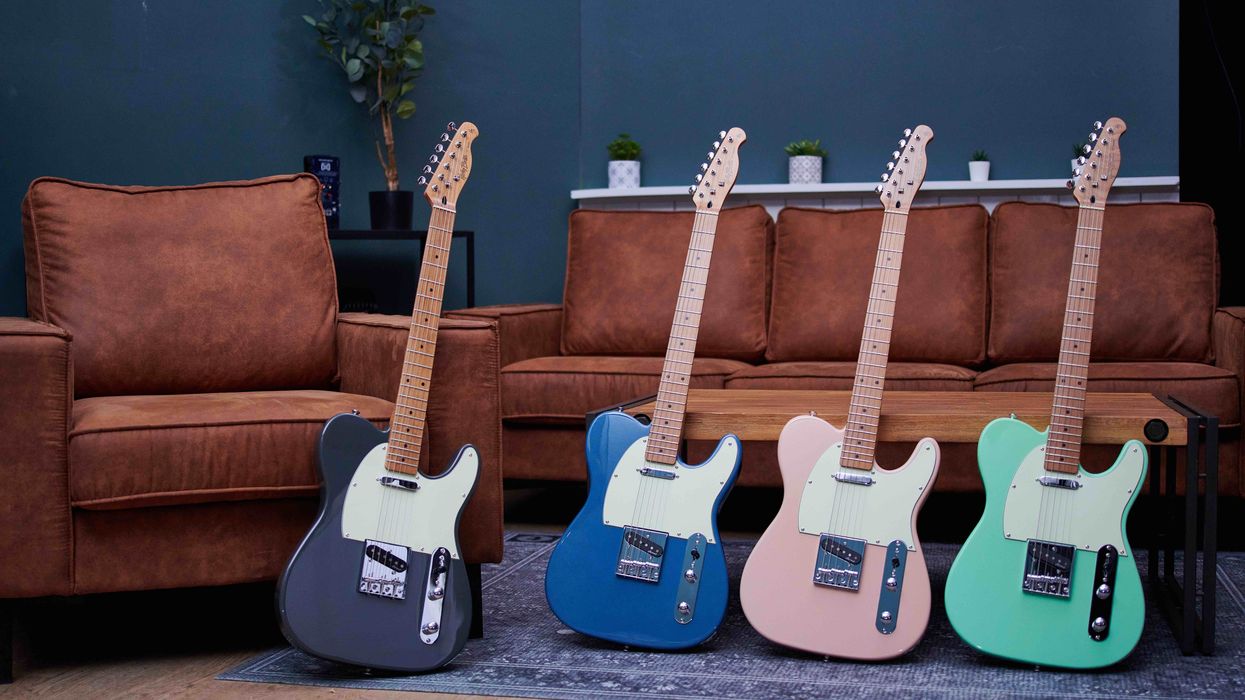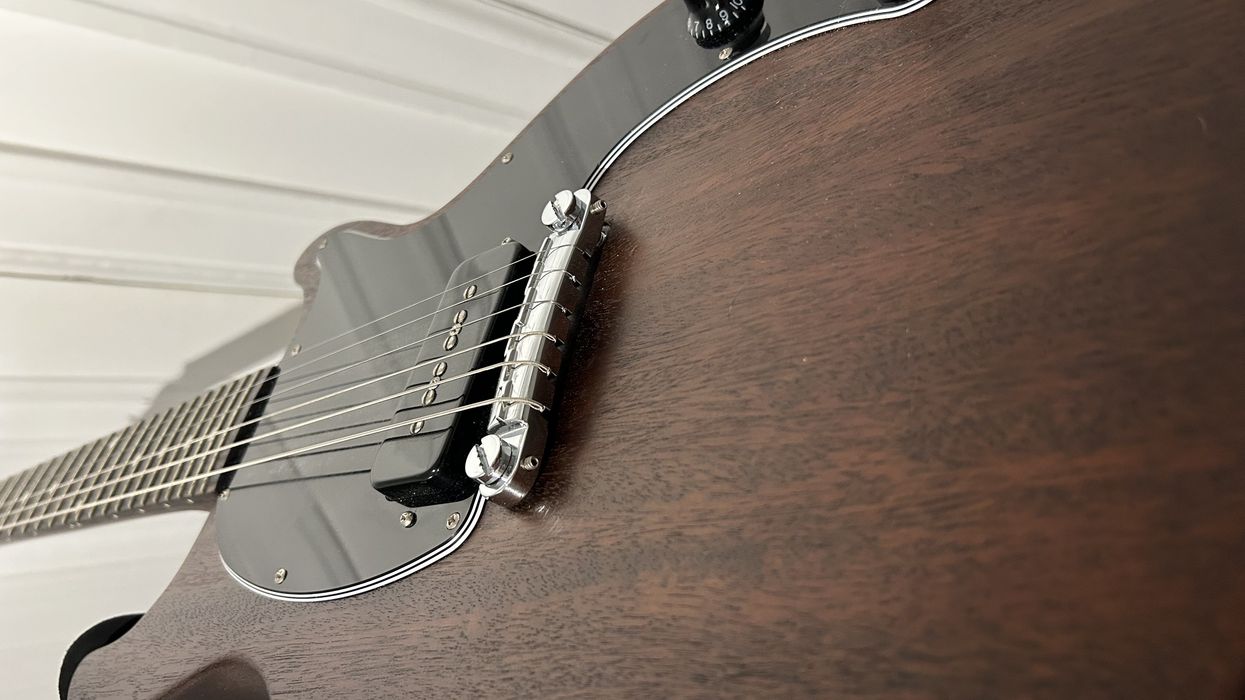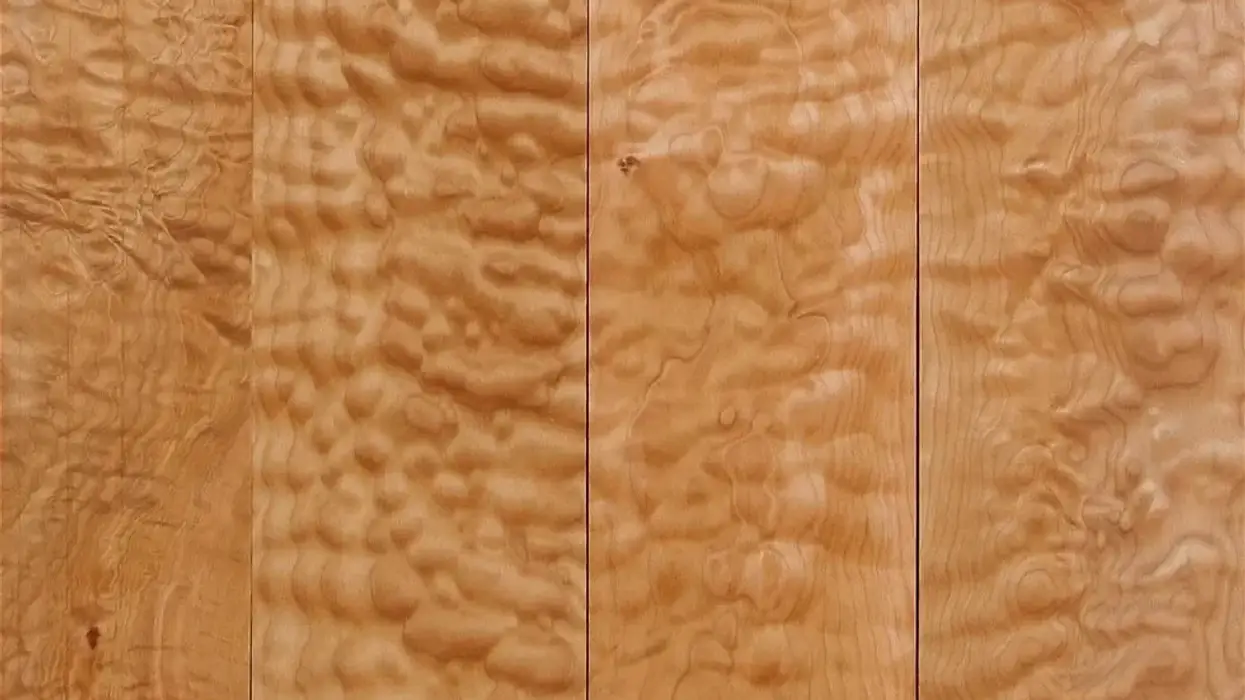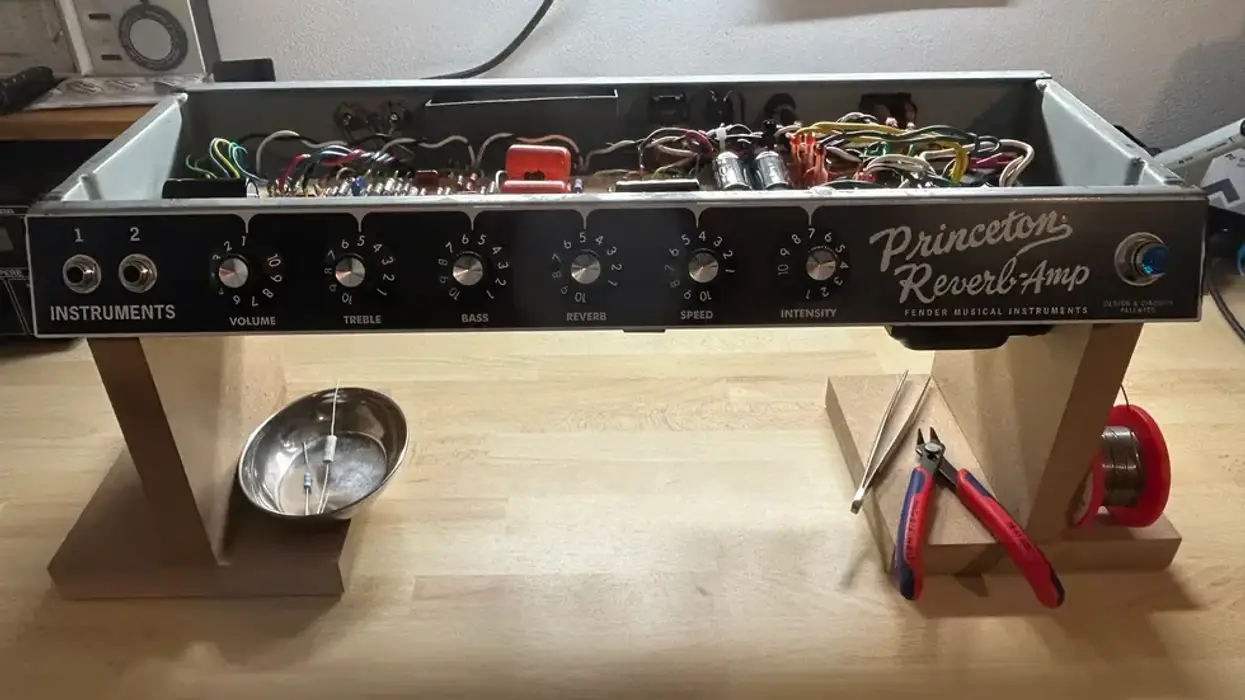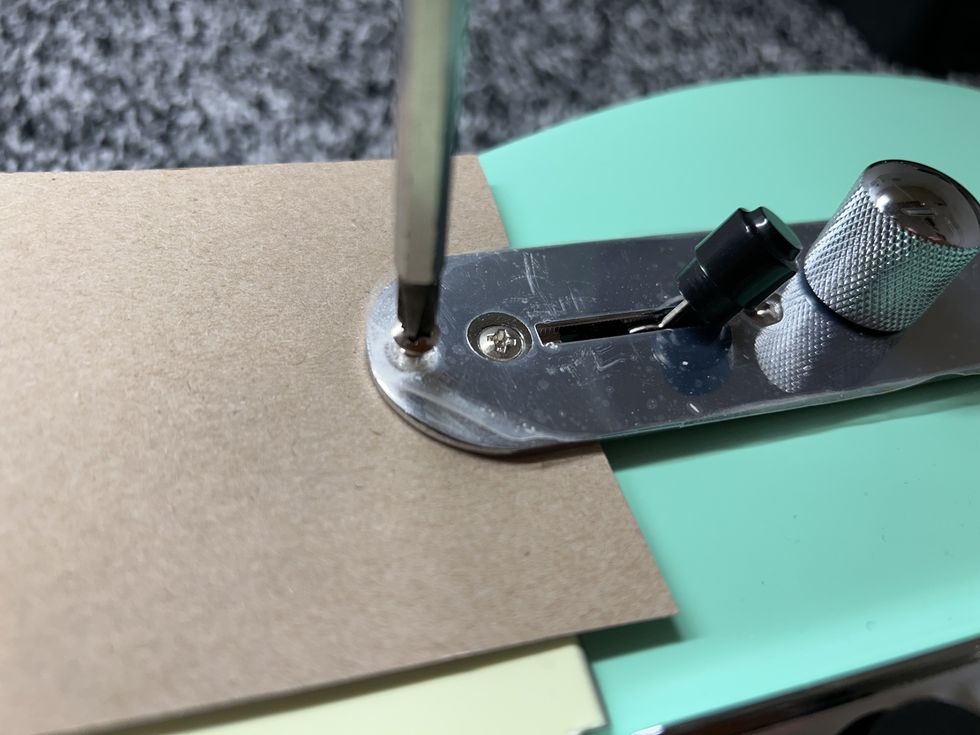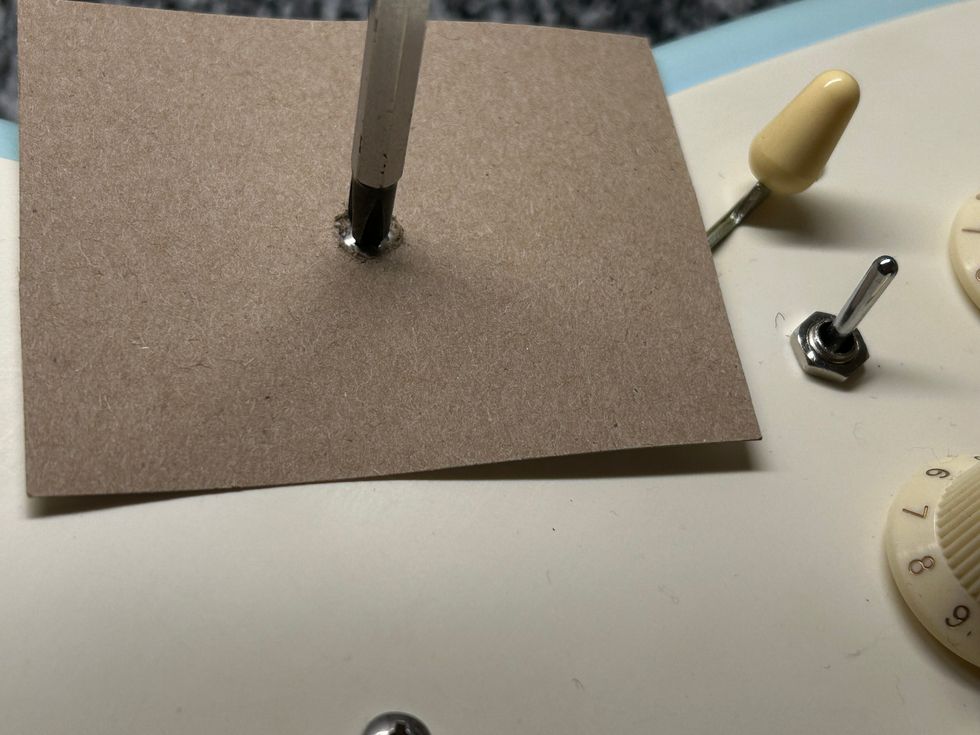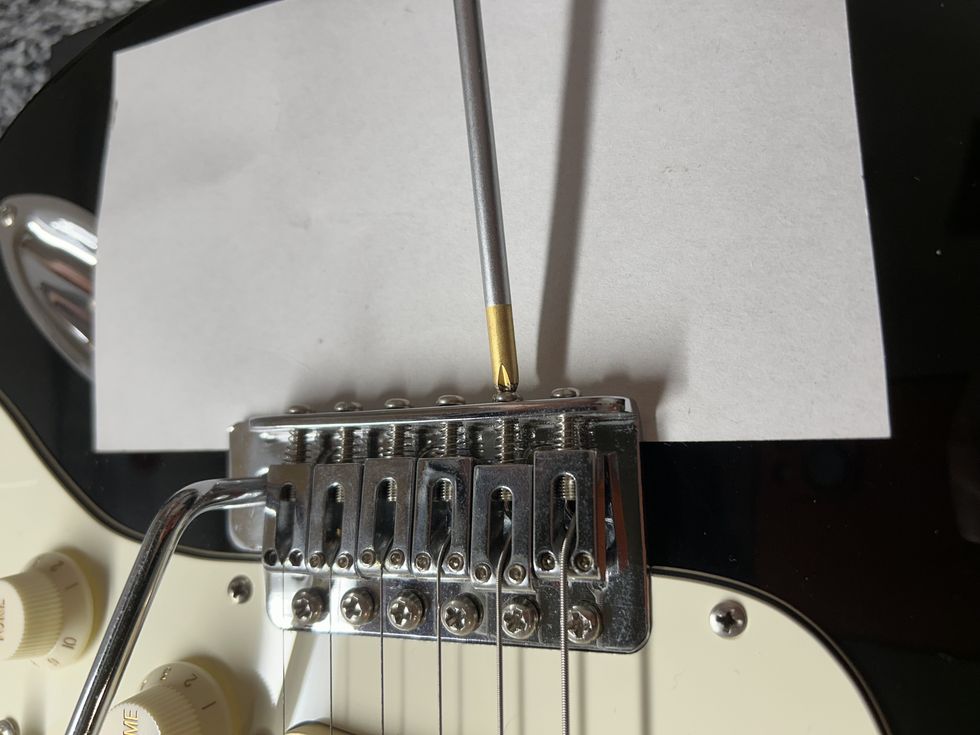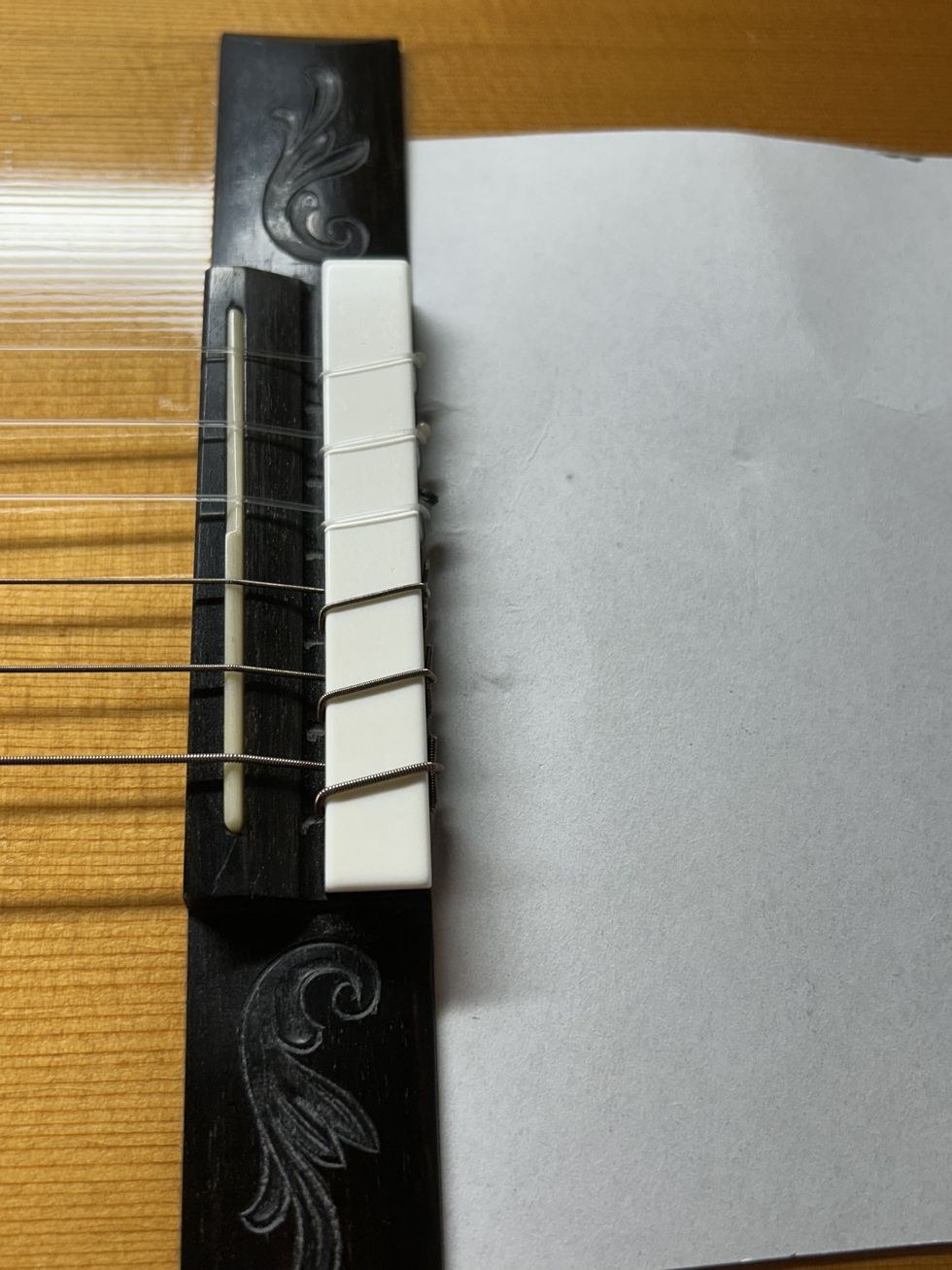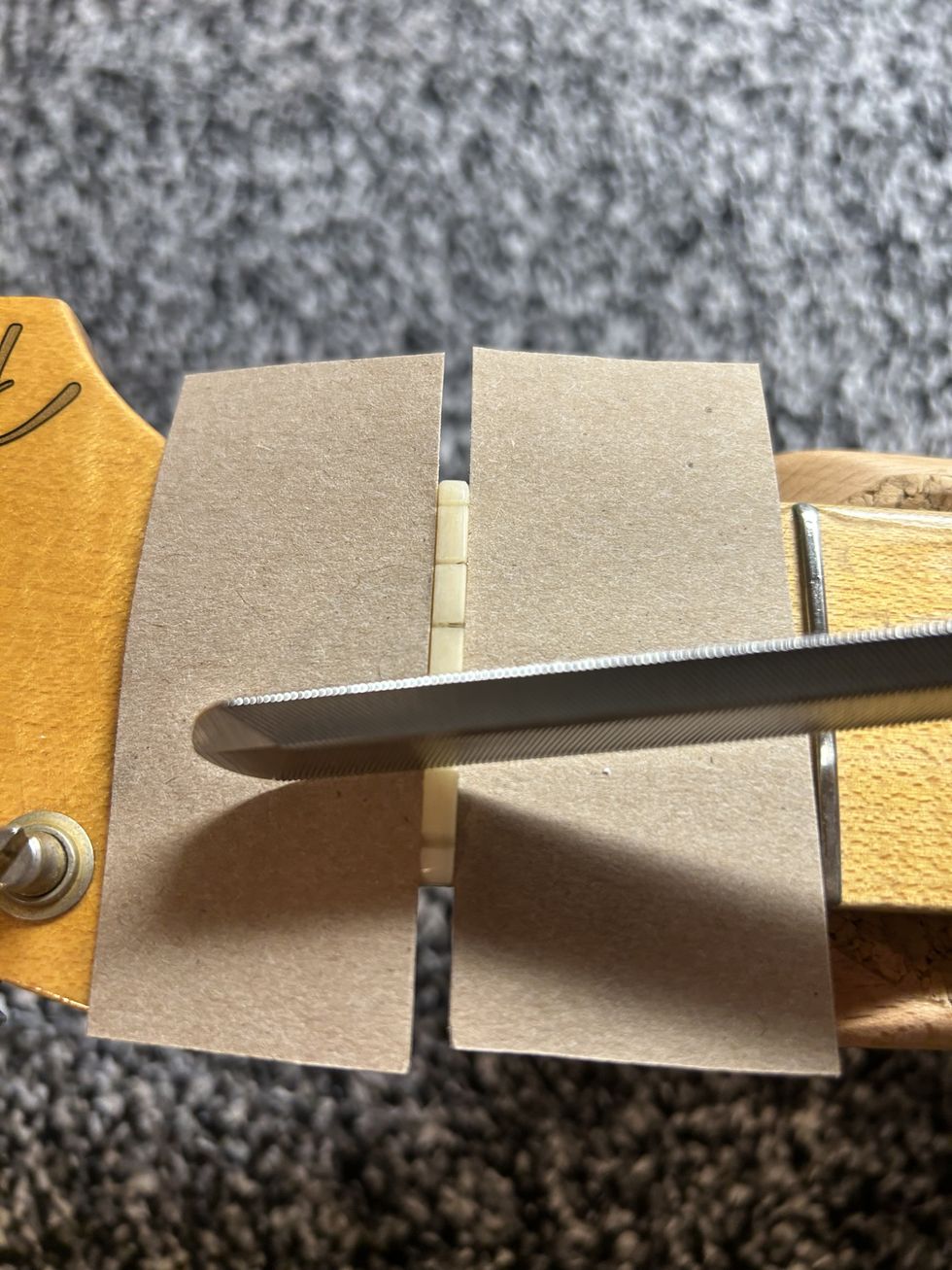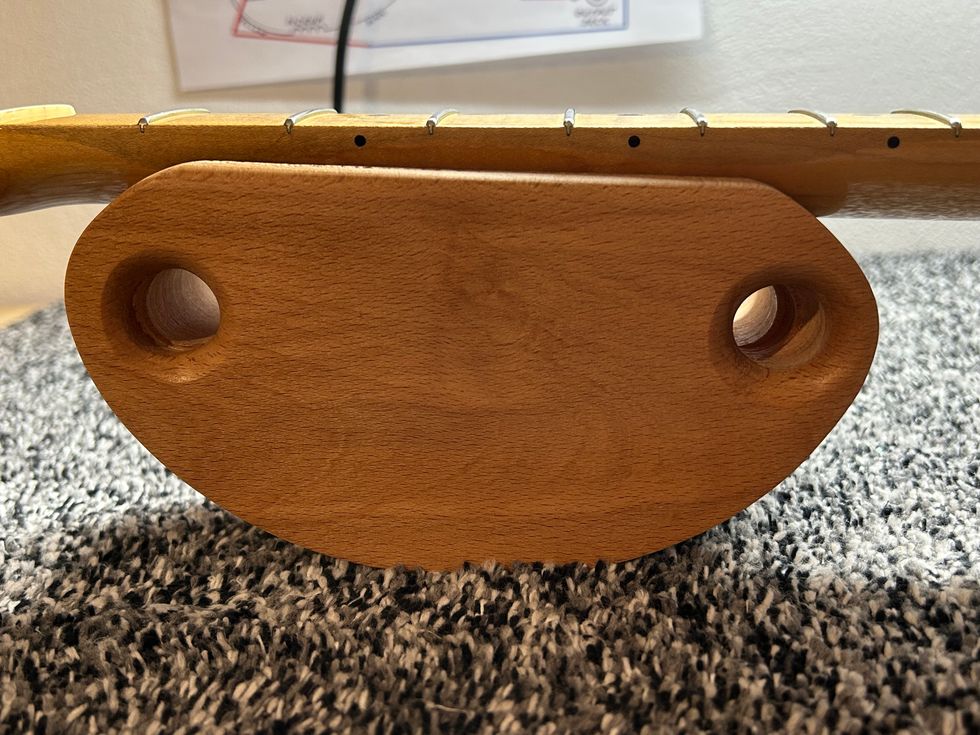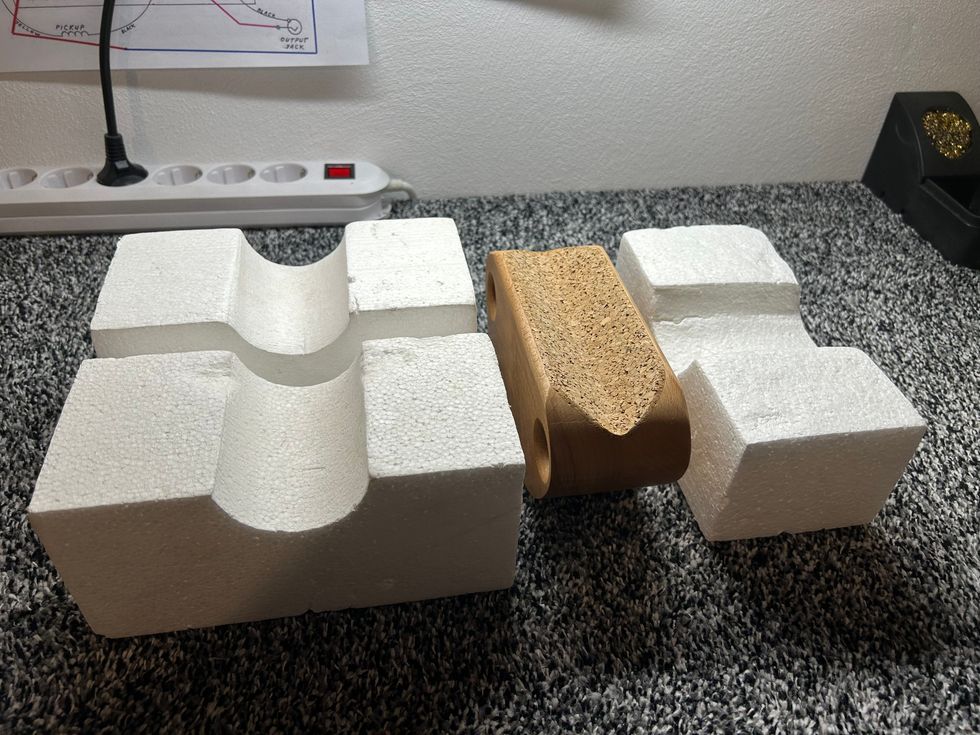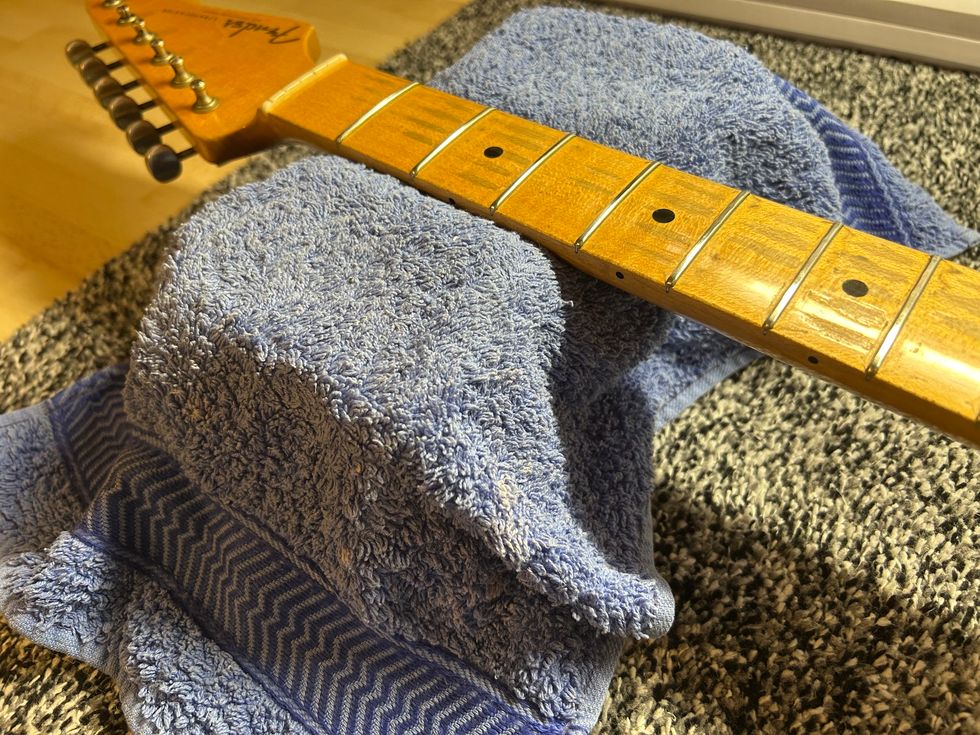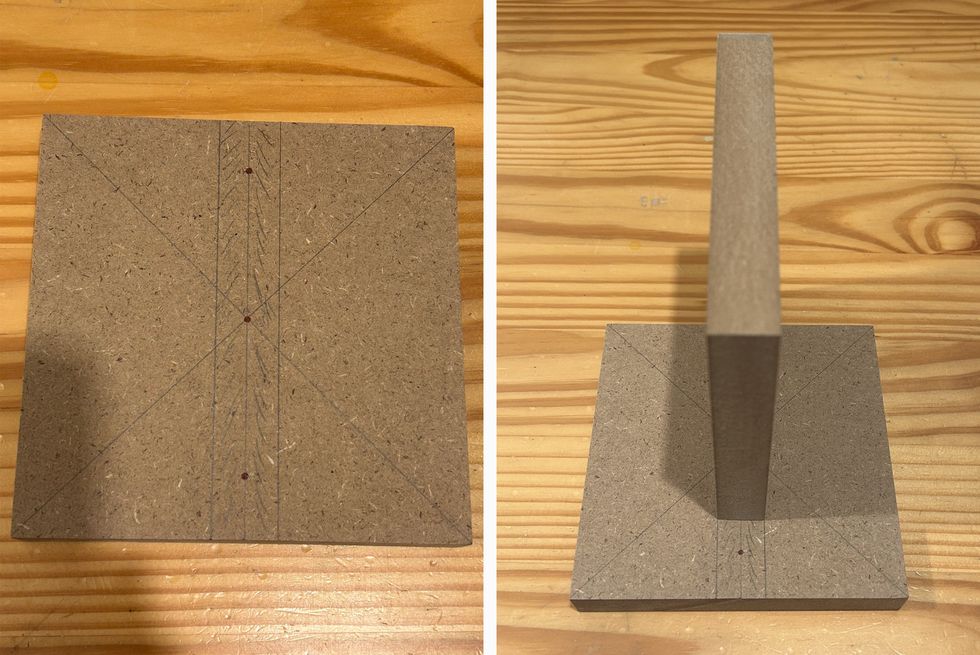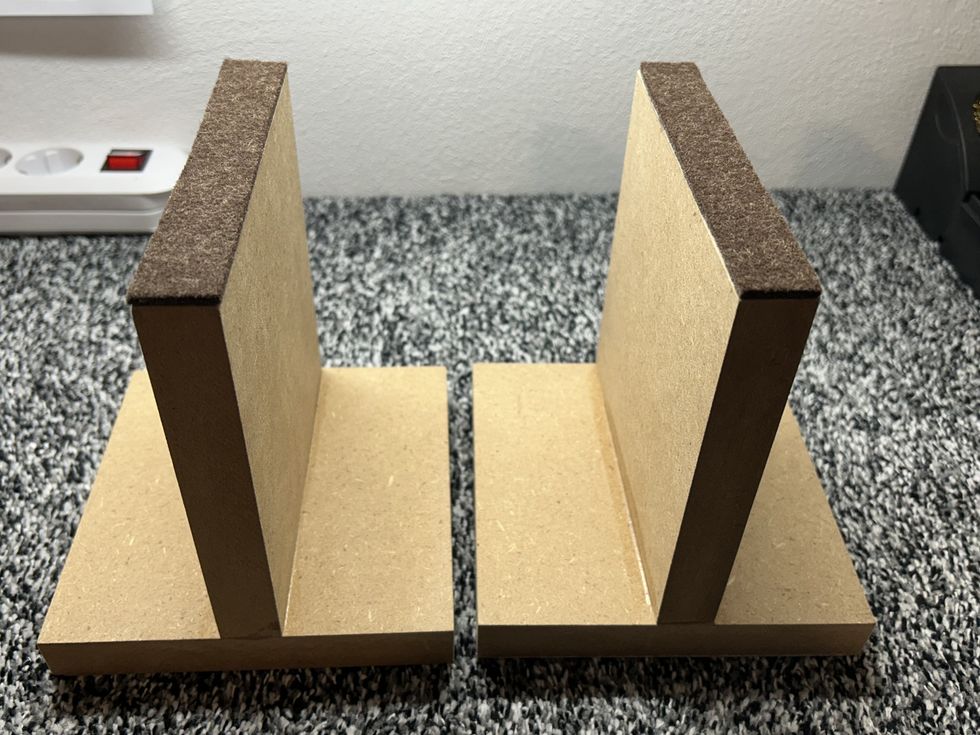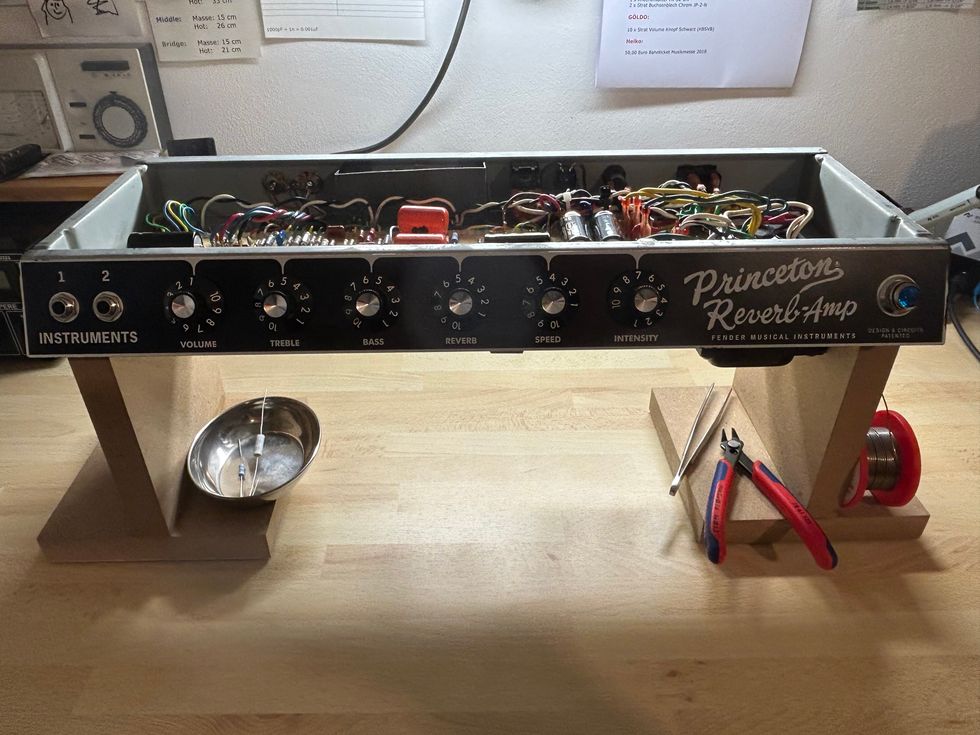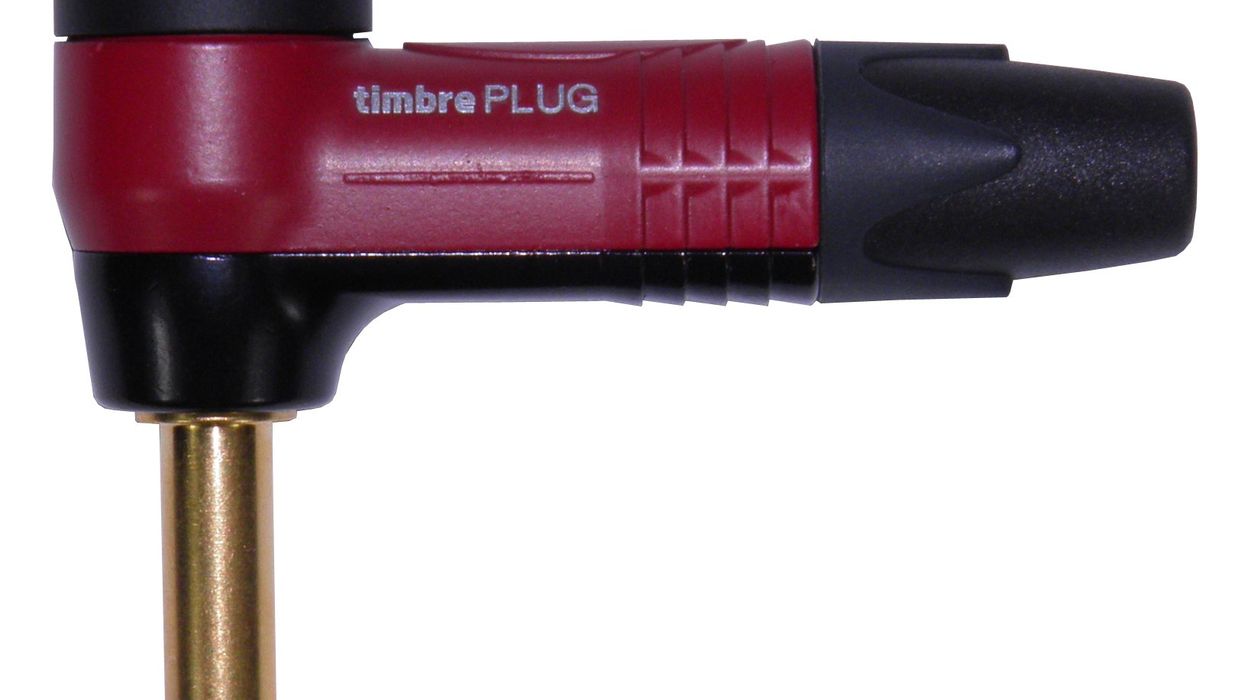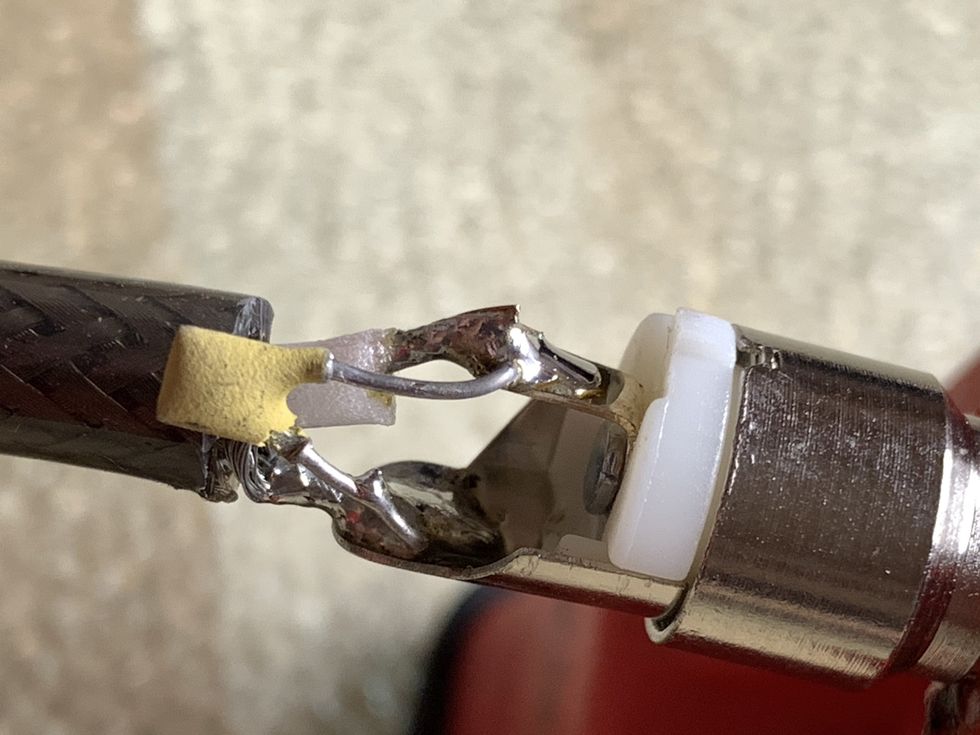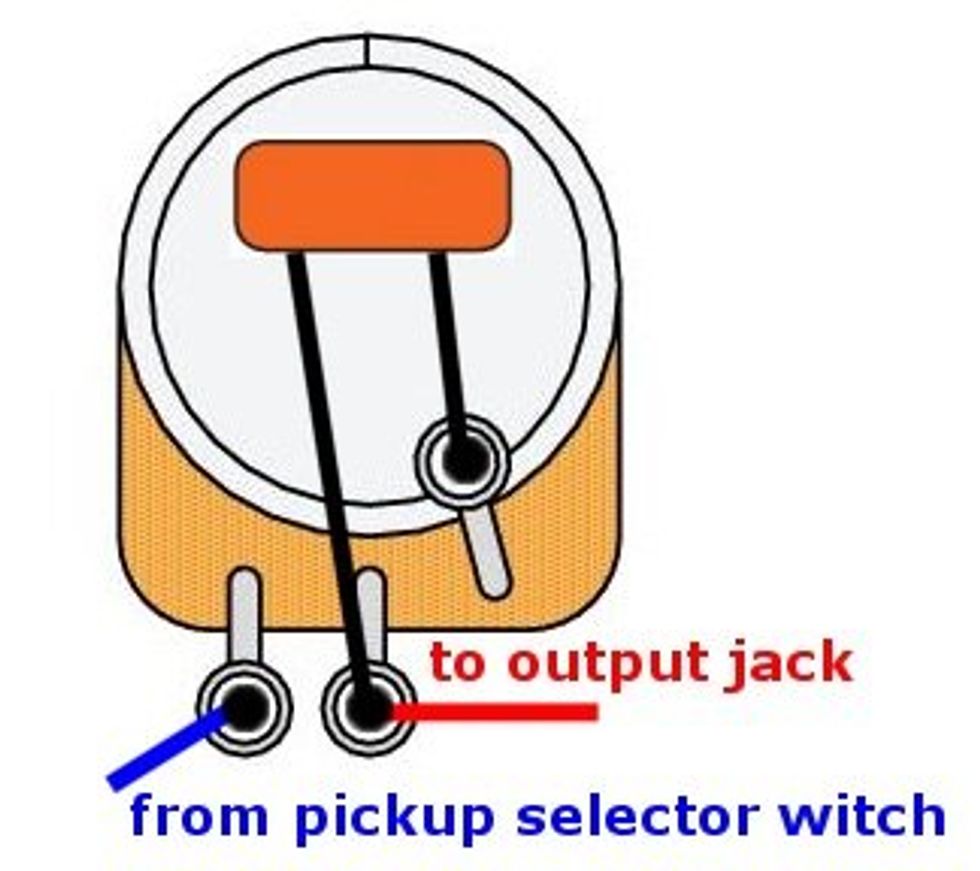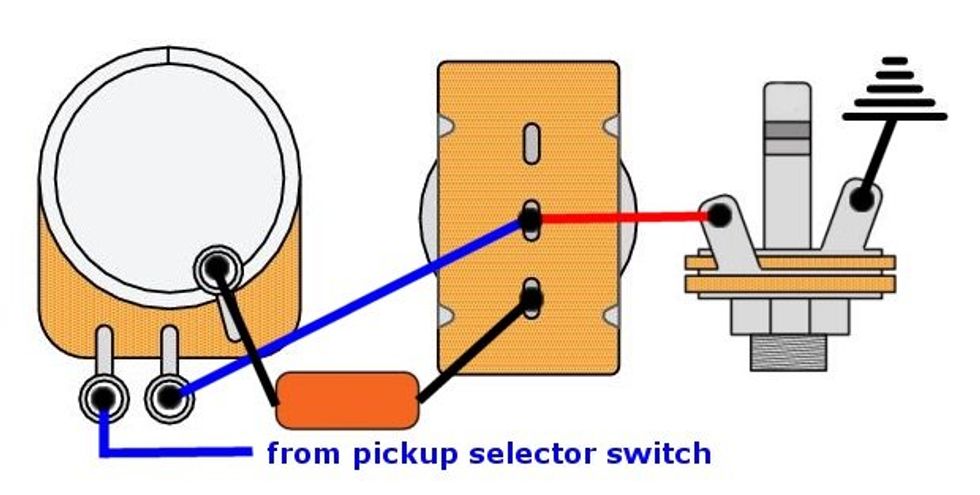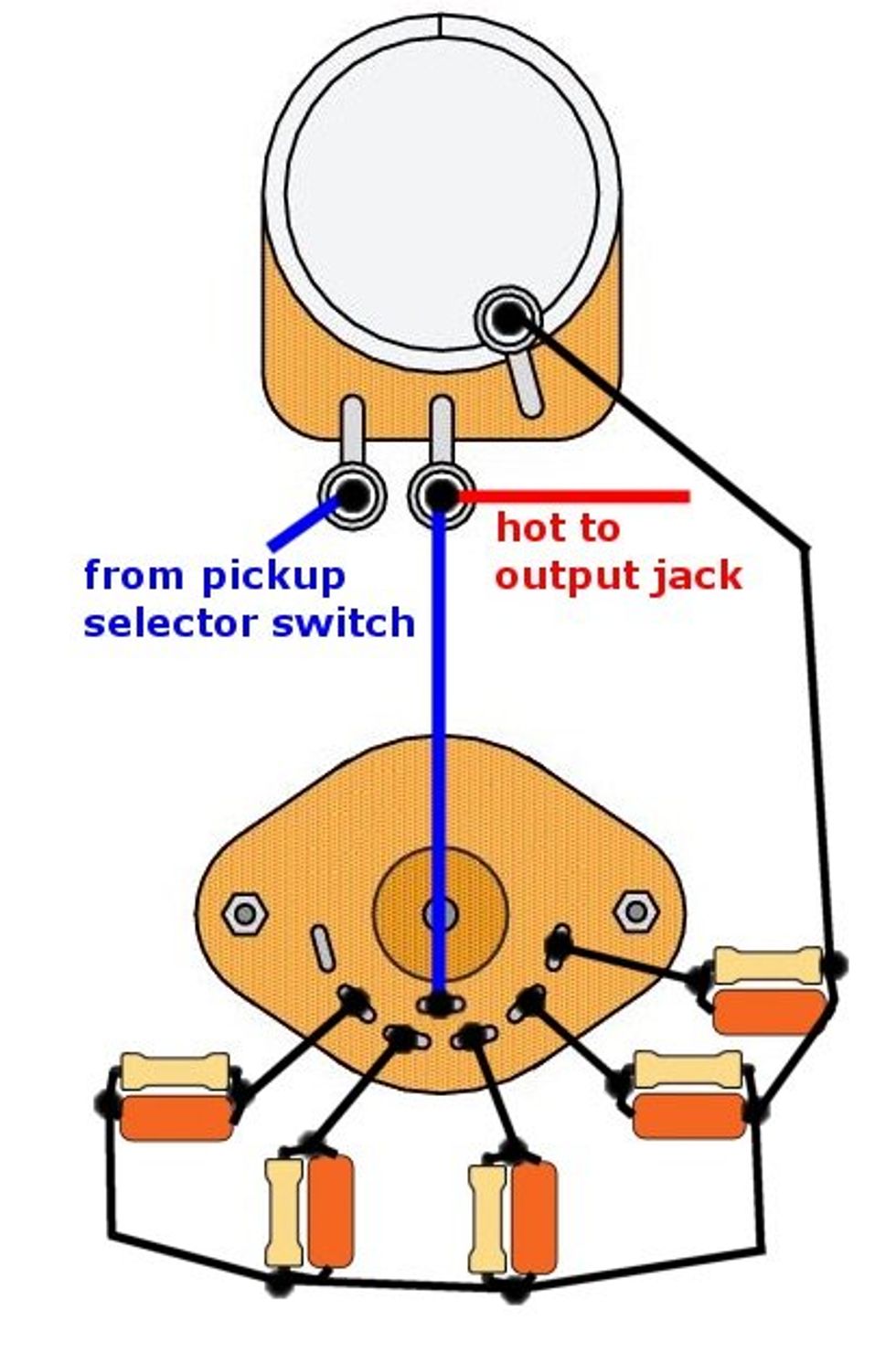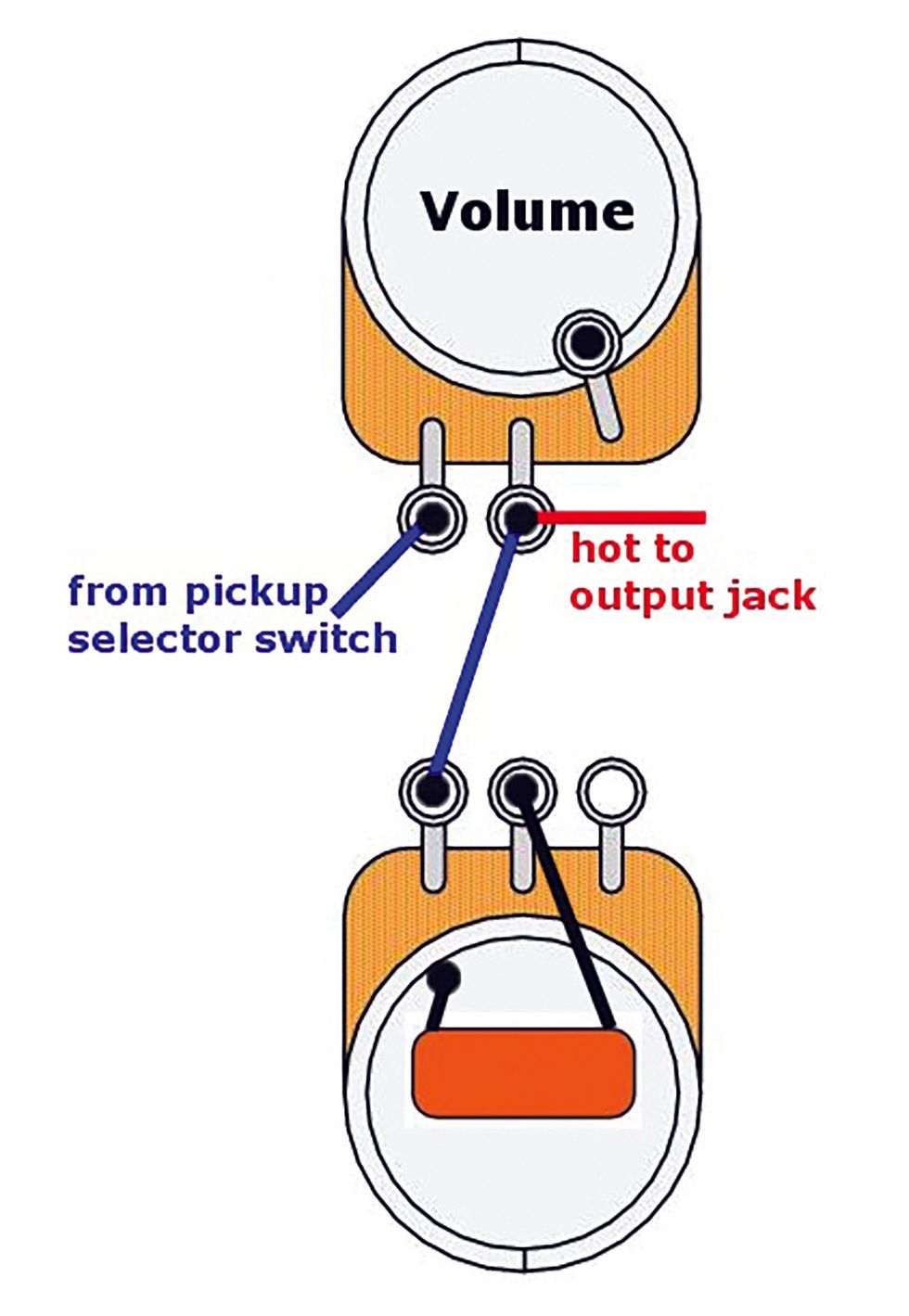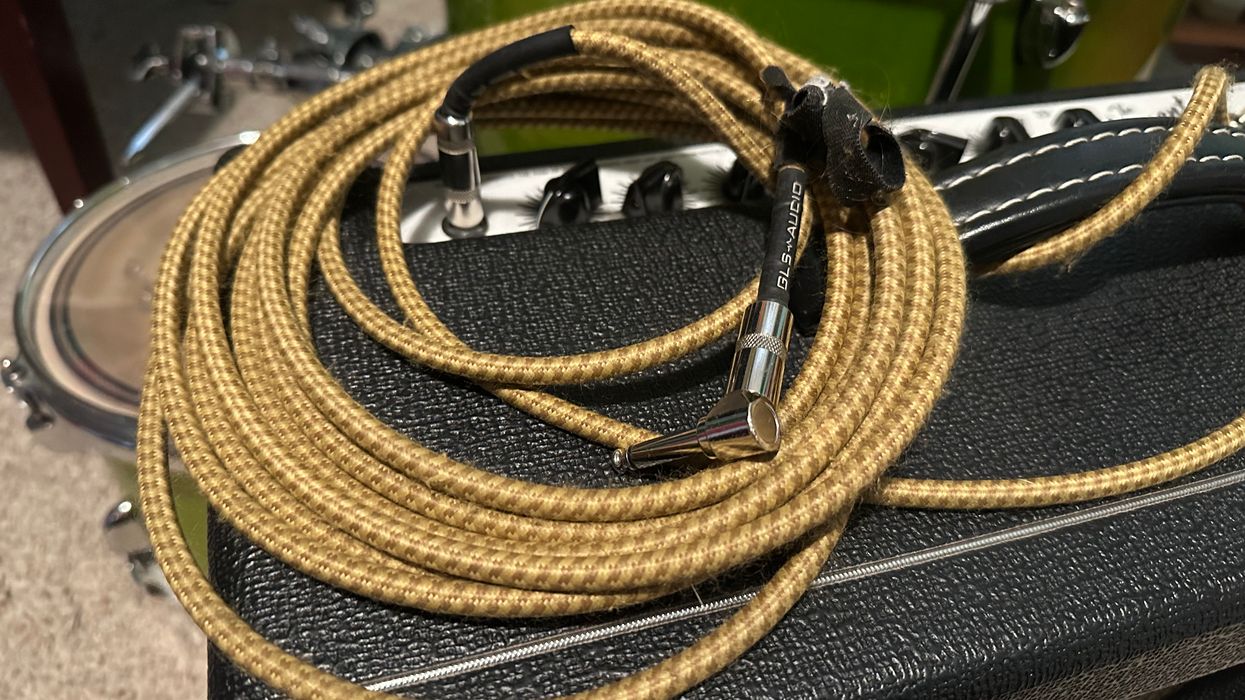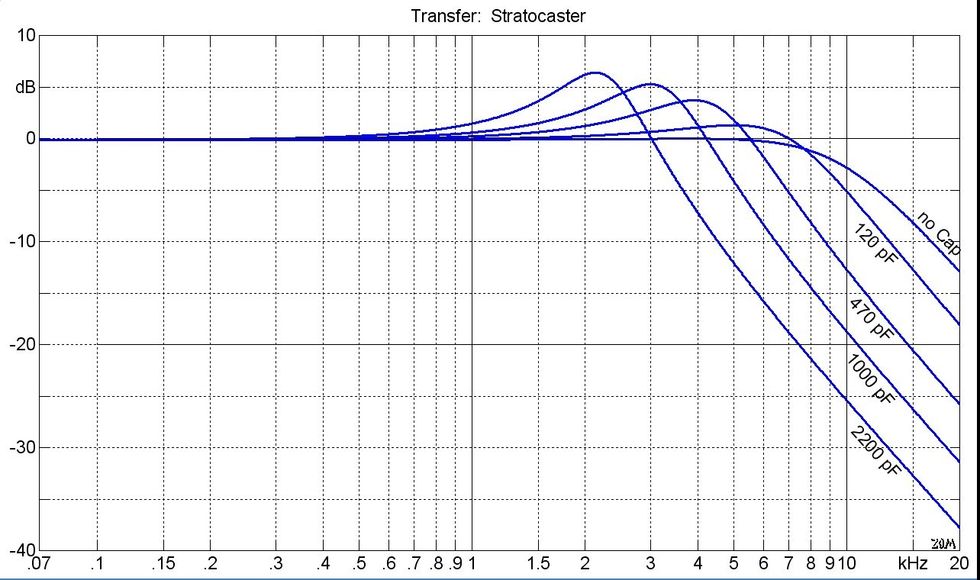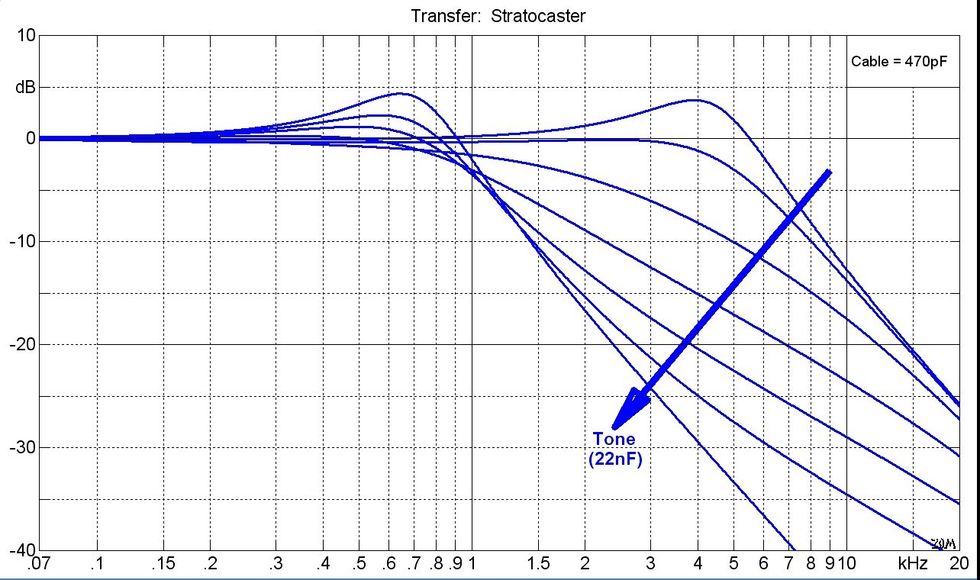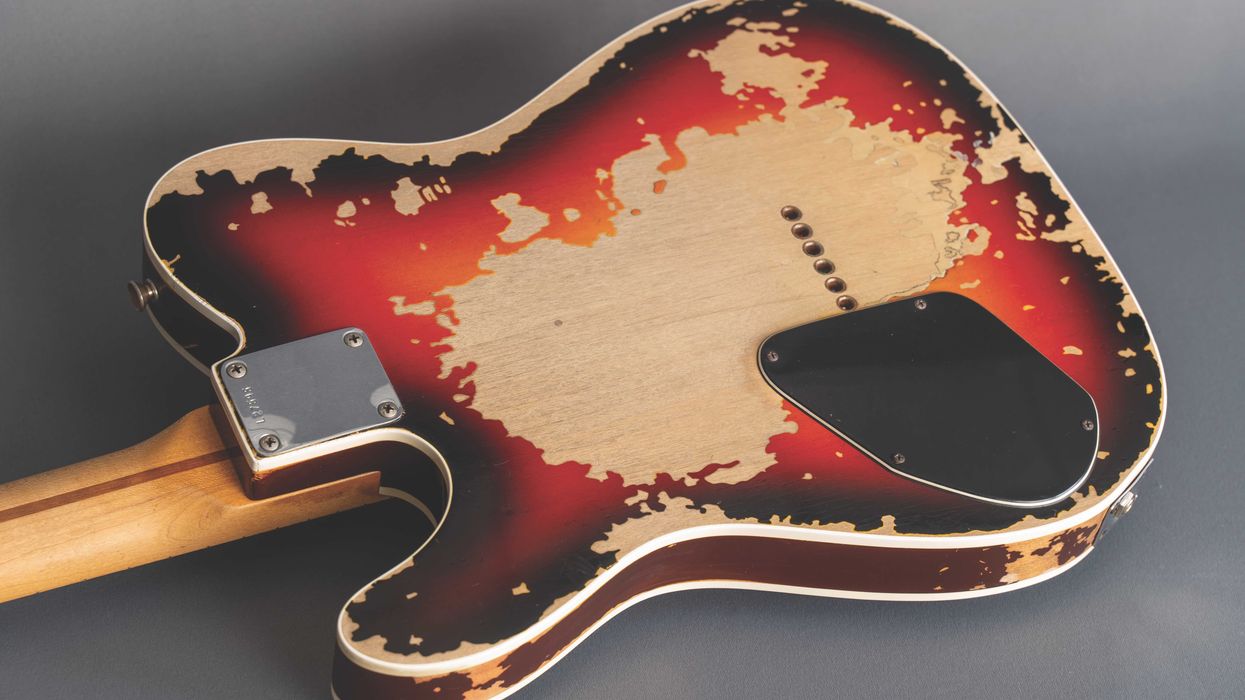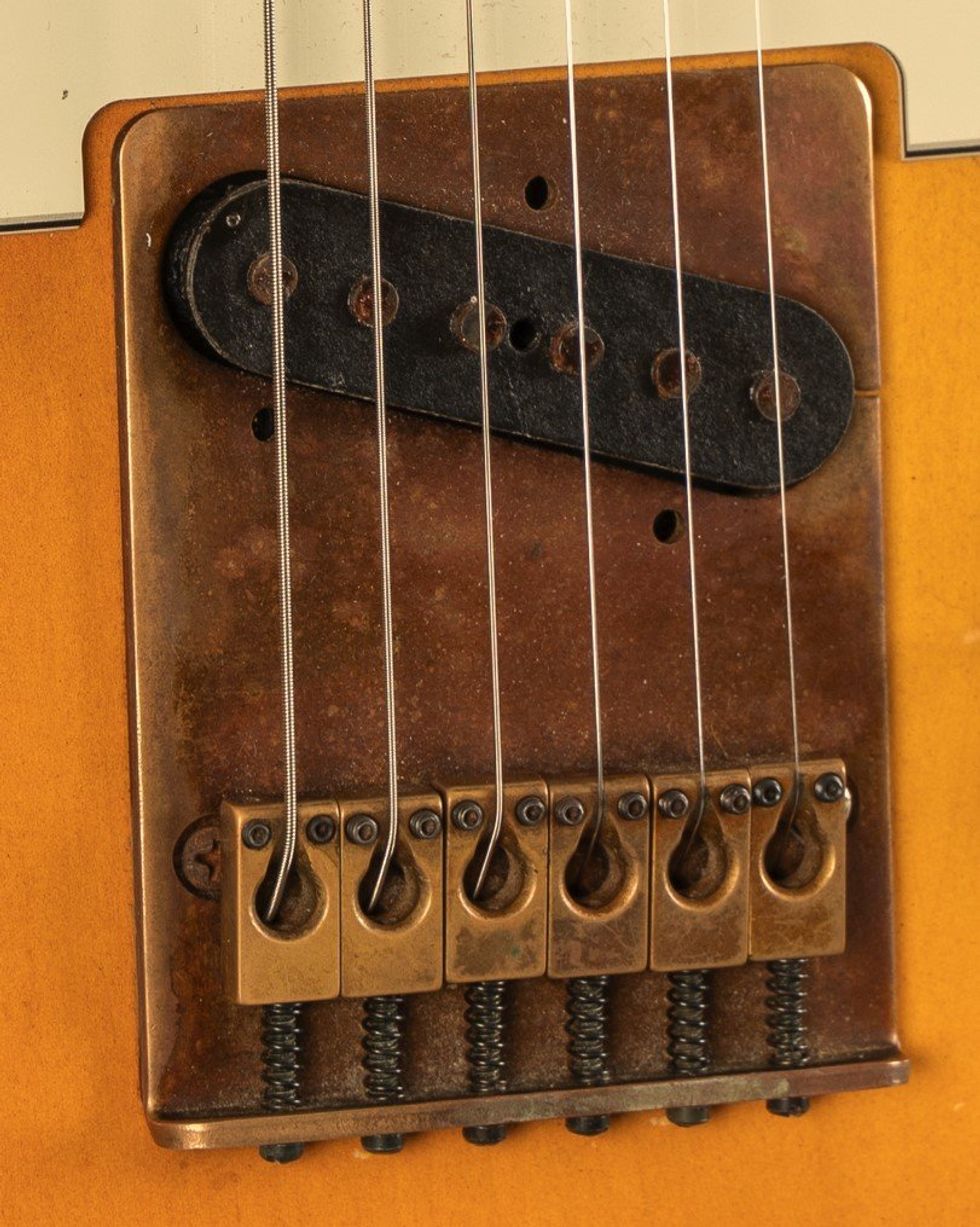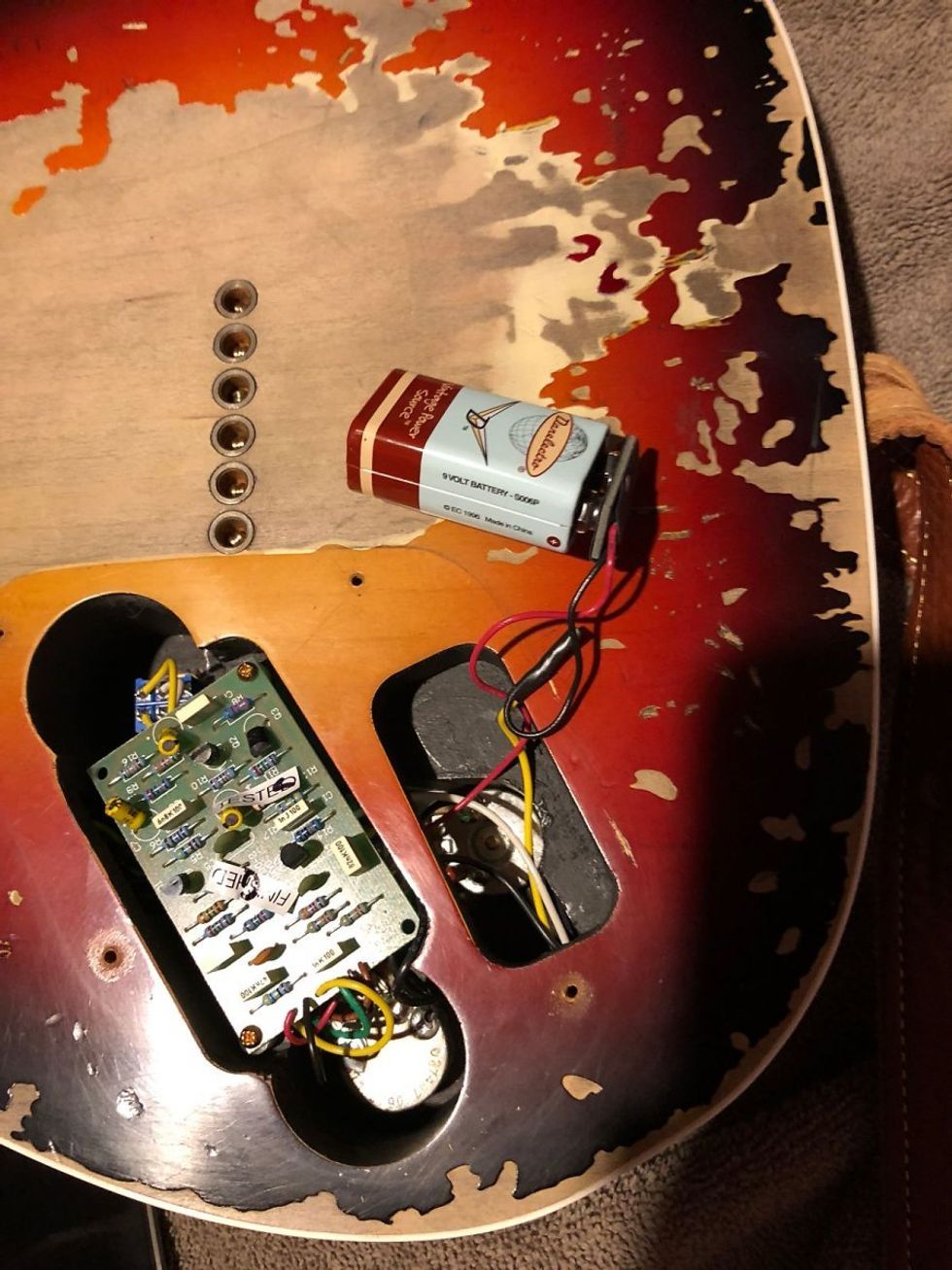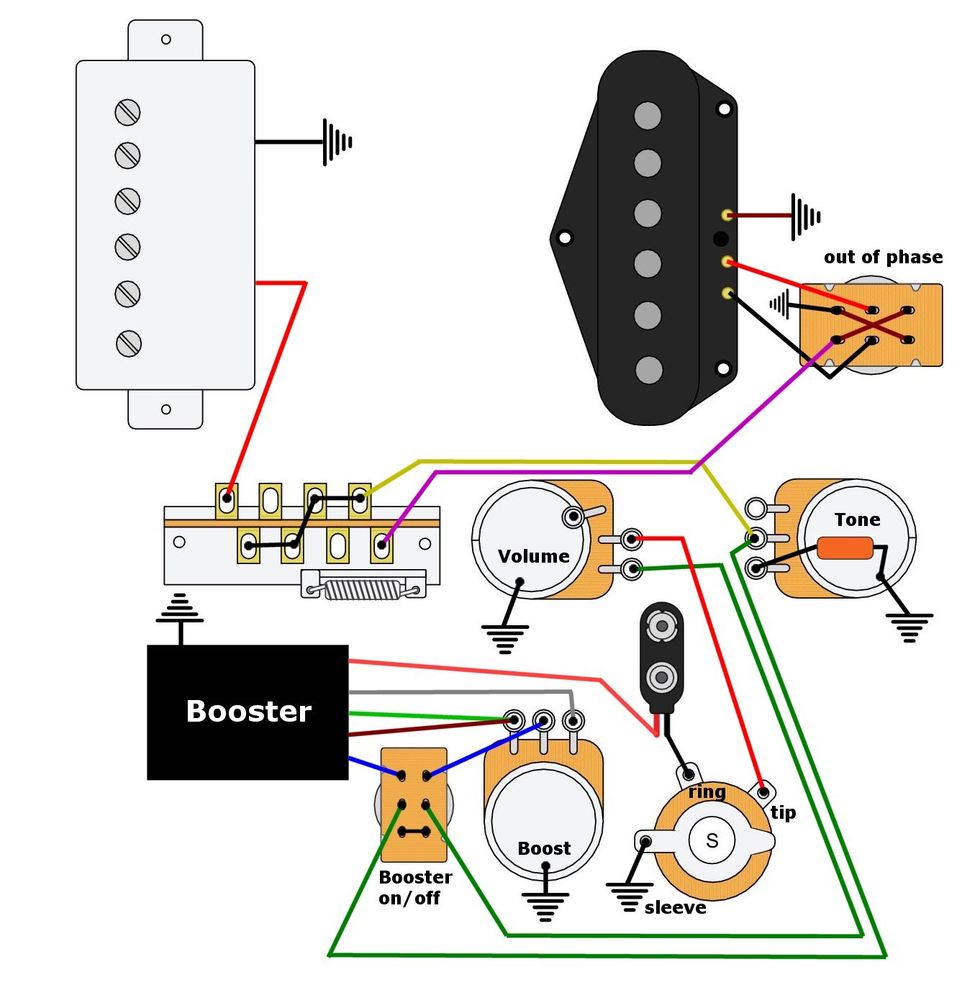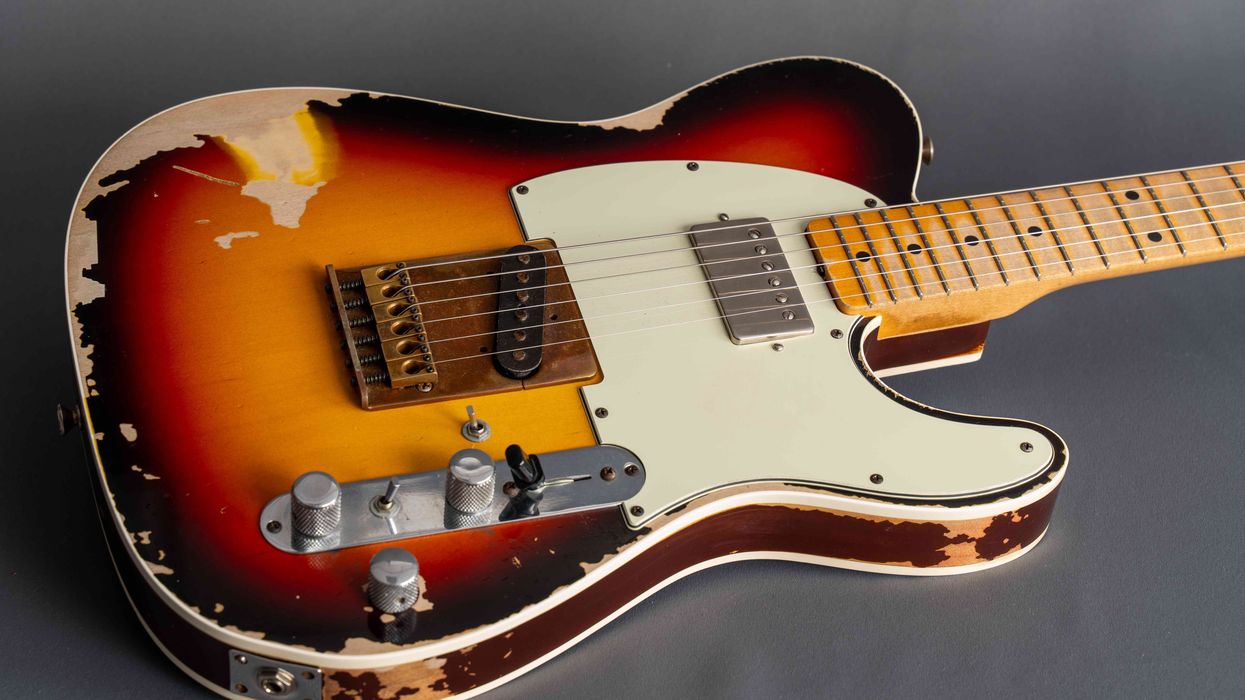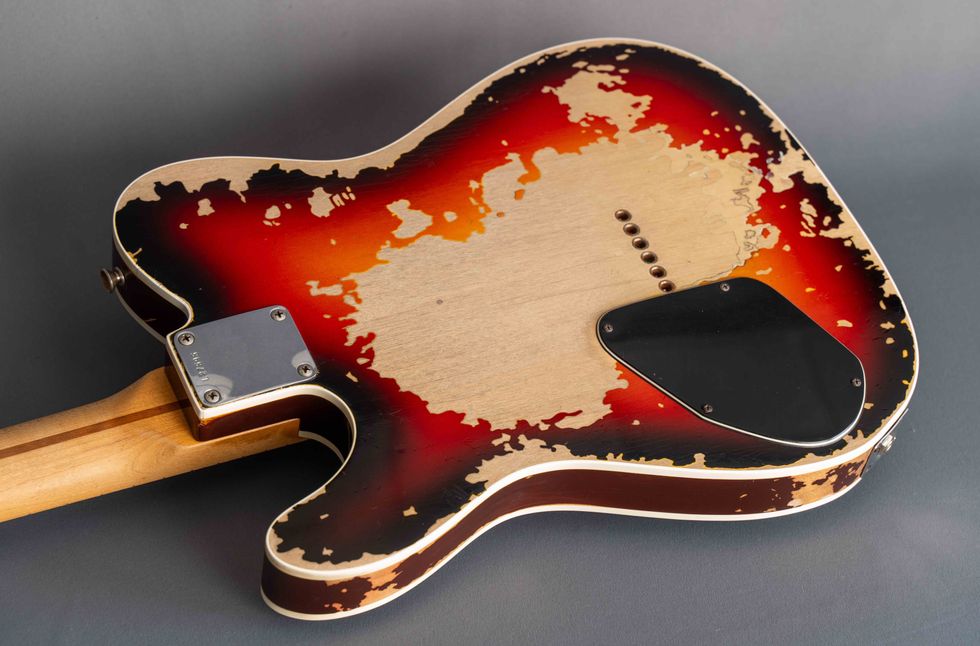Hello, and welcome back to Mod Garage. This month, we’ll take a closer look into the wacky world of Danelectro and their typical wirings.
Danelectro is a very old and authentic American guitar company, founded in 1947 by the genius Nathan “Nat” Daniel (a NYC native, born in 1912 as the son of Lithuanian immigrants) in Red Bank, New Jersey. Daniel had his own approach and was always thinking outside the box. This was the main key for his unique designs and his success, influencing the guitar world even today.
Throughout the late 1940s, the company produced amplifiers for Sears and Montgomery Ward, under the Silvertone and Airline branding. Later, Danelectro added hollowbody guitars, constructed of Masonite and poplar to cut production costs, and increase production speed. The main goal was to produce plain, budget guitars but with the best possible electrified tone. These instruments came in two sales lines and were branded either as Danelectro or Silvertone for Sears. The famous lipstick pickups were used exclusively for these guitars, and Danelectro started to use fancy colors and knobs to establish their own design trademarks. Throughout his career, Daniel filed several patents, but he missed the chance to patent a lot of his innovations, such as the 6-string bass or the first hybrid tube/solid-state amplifier.
Interestingly, Danelectro introduced the 6-string bass guitar in 1956, which was tuned like a standard guitar but one octave lower. Fender introduced their Bass VI model five years later in 1961, so this was another Danelectro first. Six-string basses/baritone guitars weren’t popular then, but they found an enduring niche in the ’60s studio world for “tic-tac” or “click” bass lines, which are a doubled bass line one octave higher. A famous Danelectro 6-string bass player is Carol Kaye, the “First Lady of Bass Guitar.” The Danelectro 6-string bass is still used in studios today, and studio legends like Brent Mason and Reggie Young have had one in their arsenal.
Danelectro was sold in 1966 and closed in 1969, before the brand was reanimated in the late ’90s for China-made reissue guitar models, amps, and stompboxes. Daniel died on Christmas Eve 1994, at age 82.
Now that we know the history, let’s go inside these guitars. When looking at Danelectro wirings, we mostly perceive these noticeable features:
- Lipstick pickups
- Stacked pots (aka “tandem pots”)
- Series, instead of parallel, wiring when combining two pickups
- Weird pot resistances like 100k for volume and 1M for tone
- Different tone caps for bridge and neck pickups
So, let’s break it down piece by piece.
The lipstick pickups are single-coil pickups with a very special construction, with the guts totally encased in a chrome-plated metal tube. The early lipstick pickups were, in fact, manufactured using real lipstick tubes, hence the name. The coil was wrapped around an alnico 6 bar magnet, and then wrapped in tape before being inserted into the tube. This bobbin-less pickup type is called “air coil,” and is a pain to repair. The pickups had a 3-conductor wiring, which is the beginning and end of the coil, plus a separate ground.
Using stacked pots was another Danelectro first. The Fender Jazz Bass also used stacked pots from 1960–1962, but Daniel did this some years earlier. This configuration uses less space, offering two independent controls in the space of one pot. We still find a lot of stacked pots today in the bass world.
Most Danelectro guitars combine the pickups in series rather than in parallel, which is part of their unique sound that can be described as fat, loud, and beefy in the middle position. This was decades before other companies started to offer such a feature, too.
"The early lipstick-tube pickups were, in fact, manufactured using real lipstick tubes, hence the name."
Using 100k pots for volume and 1M for tone in a passive guitar is, for sure, strange. A 100k audio volume pot will give you very good control over its whole rotation but will dampen some high end in a passive wiring. On the other hand, a 1M pot will give you close to zero control over its rotation, but there is a lot of high end present. The lipstick pickups have a very jangly tone, full of high end, so I think Daniel chose 100k to benefit from the perfect control range and wanted to compensate for the high end by using 1M pots for the tone control. Not a bad move. The tone of the pickups could handle the 100k, and still had enough high end. But using 1M for the tone control was not a good idea at all.
To enhance such a typical Danelectro wiring, I would personally use 250k audio pots for volume and 500k audio pots for tone control. Regarding high-end chime, it’s always better to have it and not need it than to need it and not have it. It’s easy to tame with the tone control, but impossible to add in a passive wiring when the high end is not already there.
Using different tone caps for the bridge and neck pickup is a very clever move, and other guitar companies needed decades to realize this. But Daniel wouldn’t be Daniel if he hadn’t done it his own way. Instead of using the “smaller” cap for the neck pickup to keep some high-end chime intact when rolling back the tone, he did it exactly the other way around. You can often find 0.01 uF caps for the bridge and 0.047 uF for the neck pickup, resulting in a super-dark and woolly tone when closing the tone pot for the neck pickup. If you don’t need this lifeless bass-y tone, it’s a cool upgrade to change the tone cap for the neck pickup.
So, let’s now have a look at a typical Danelectro wiring using two lipstick pickups, two concentric pots, and a series wiring for the middle position of the pickup switch. There is one 100k/1M stacked pot for each pickup, sporting volume (100k) and tone (1M). The tone cap for the neck pickup is 0.047 uF, and the bridge pickup tone cap is 0.01 uF. We talked about possible upgrades above. The pickup-selector toggle switch is a single pole on-off-on switch, offering the following sounds:
- Bridge pickup alone
- Bridge + neck pickup in series
- Neck pickup alone
The wiring is typical Daniel and really outside the box. With the bridge pickup engaged, the neck pickup is shorted out with its hot and ground connected, and the bridge pickup is directly connected to the output. With the neck pickup engaged, the output of the bridge volume pot is connected to ground. In the middle position, both pickups are connected in series.
So, here is the wiring, as seen in Fig. 1. I’m showing the wiring with the original concentric pots, but if you want to use four individual pots, it’s the same identical wiring. Please note that both casings of a concentric pot must be connected to ground and that there is no connection between the two casings by stock. The best practice is to solder a short jumper wire from the lower to the upper casing, so you have a connection between both casings. You can test this with your digital multimeter (DMM) set to continuity and afterwards connect only the upper casing to ground which will make things much easier.
Because of this speciality, I decided to show all ground connections in Fig. 1 as a wire, not using the ground symbol as usual, to keep the diagram as clean as possible.
That’s it, for now. Next month, we’ll honor and remember the great Jeff Beck by taking a deeper look into his guitar setup and analyzing how you can come close ... at least electrically. Until then ... keep on modding!
